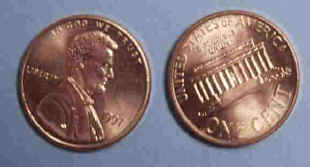BACKGROUND:
Scientists must use their powers of observation to
find answers to scientific questions. Part of this process is the ability to
observe and describe something carefully and in detail. This skill must be
taught to students.
We naturally observe the world with all of our
senses. However, the ability to observe in detail does not seem to be
innate; it must be learned through practice. This is especially true of
children. They feel that they should know how to describe an item if they
are familiar with it, but quickly discover that what they know is
superficial.
Students can be taught good observational skills
through detailed examination of everyday objects. The example in this
exercise can be extended to many other items.
PROCEDURE:
 Tell the
students that they are going to act like scientists. They are going to
look at something carefully, just like scientists do, in order to find
out new things about it.
Tell the
students that they are going to act like scientists. They are going to
look at something carefully, just like scientists do, in order to find
out new things about it.
- Give each student a penny and have them examine it for a minute.
Afterwards, have the students hide their pennies in their hands, and
warn them not to look at the penny while you are asking the questions.
They are to rely only on their memory of what they have observed.
- Ask students the following questions about the pennies. Once again
remind them that they cannot look at the penny for the answers.
- Who is the man on the penny?
- What is on the other side of the penny?
- Draw what you see on the other side.
(Have them help you draw the buildings).
- Which side has letters but no numbers?
- Which side has both numbers and letters?
- Allow students to examine the penny for another 30 seconds and then
ask:
Does Lincoln have a bow tie or long tie on?
- Conclude that a penny makes "sense" (pun with cents)
because Abraham Lincoln is on one side and on the other side is the
monument that honors him. Lincoln could not be wearing a long tie,
because people in those times wore bow ties.
- Have the students make a detailed drawing of each side of the penny.
Use the templates on the next page, or create your own templates (plastic
lids work well).